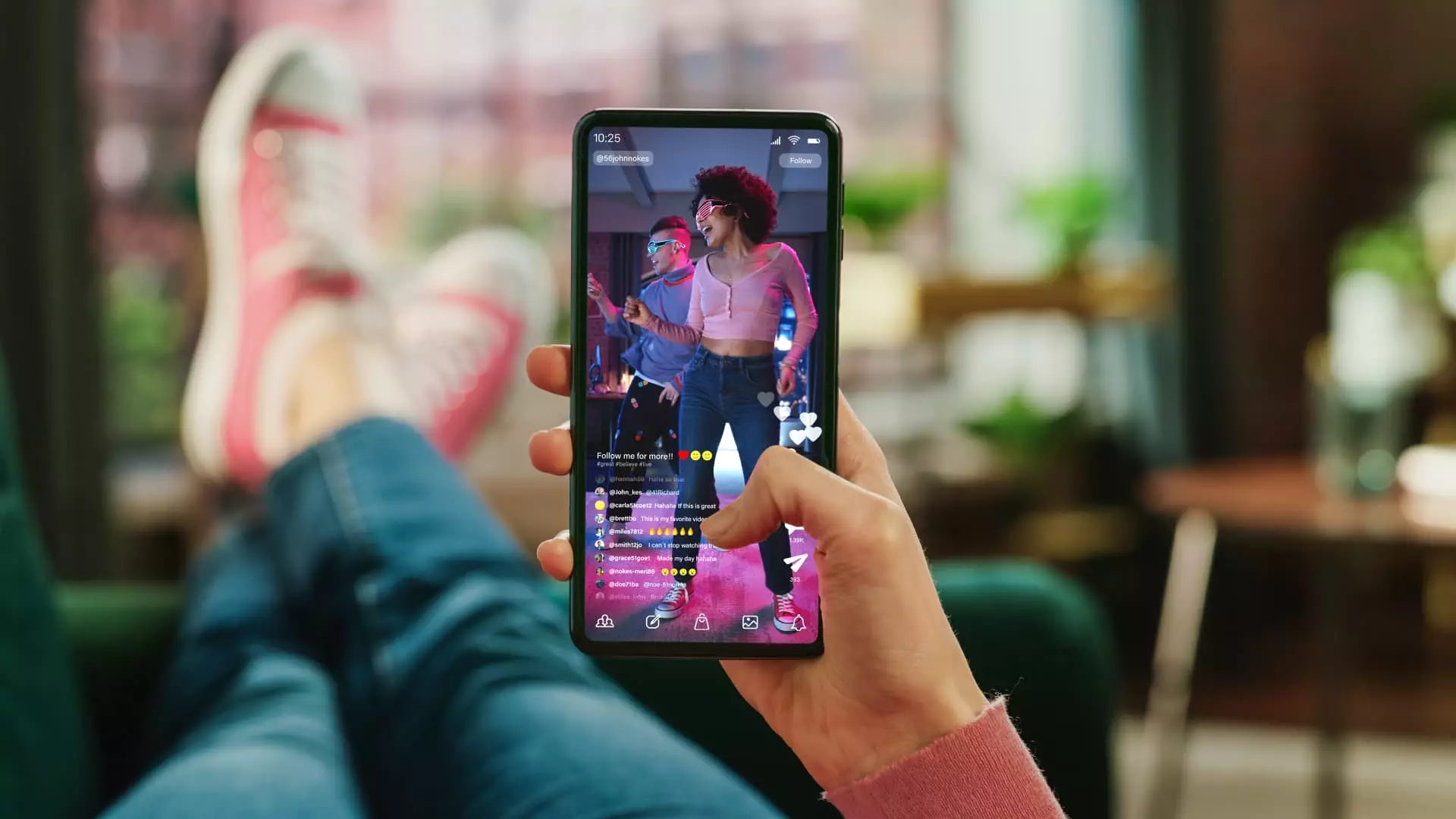In the digital age, TikTok has emerged as a paradigm-shifting force in the short-form video realm. Launched globally in 2016 by ByteDance, the platform has quickly ballooned to over 1.12 billion active users each month, making it a titan among social media platforms. Users in the U.S. are averaging an astonishing 108 minutes per day on TikTok, underscoring the app’s magnetic grip on its audience. This unprecedented consumption has not only characterized the app as a beacon of entertainment for younger generations but has also forced traditional heavyweights like Meta and Google to fundamentally rethink their engagement strategies.
TikTok’s unique blend of algorithmic sophistication and user-centric design has allowed it to resonate deeply with its demographic—one that craves immediacy, humor, and vibrancy. Jasmine Enberg from Emarketer aptly summarises this dynamic by stating, “It is the center of the internet for young people.” Unlike other platforms that offer a more curated experience, TikTok thrives on a stream of content that is endlessly refreshing, establishing a new cultural standard for how we interact with our screens.
The Competitive Response: Short-Form Video Adoption
In the wake of TikTok’s ascent, other platforms have scrambled to replicate its success. Facebook’s Instagram Reels and Google’s YouTube Shorts have both initiated aggressive expansions featuring enhanced tools for creators and even distinct apps aimed solely at this content format. LinkedIn, surprising many, is now stepping into the fray with its own version of a TikTok-like feed, demonstrating just how ubiquitous the influence of TikTok has become.
Nonetheless, many analysts remain skeptical. While platforms attempt to mimic aspects of TikTok, they often struggle to mirror its nuanced, almost intuitive algorithm that determines user engagement. TikTok understands its audience in a way that others do not, locking users into a continuous cycle of consumption. This raises an important question: Can emerging competitors genuinely compete with TikTok, or will they merely become also-rans in a market reshaped by a singular app?
The Psychosocial Impact of Continuous Scrolling
While TikTok’s engagement numbers may be impressive, there lies a shadow behind this digital age’s obsession with short-form content. Experts have raised alarms over dwindling attention spans and escalating mental health issues among users, particularly younger individuals who are increasingly tethered to their screens. Dr. Yann Poncin from Yale’s Child Study Center highlights the consequences of this all-consuming behavior: disturbed sleep cycles and heightened anxiety levels are becoming common concerns, underscoring the darker ramifications of endless scrolling.
In the past, entertainment often revolved around developing a narrative that allowed viewers to embark on a journey. TikTok, however, flips this concept on its head, prioritizing fleeting moments designed to hook viewers in a matter of seconds. This cultural pivot is not without consequence; it changes not only how we perceive entertainment but also how we define ourselves in a world where instant gratification reigns supreme.
The Monetization Challenge for Content Creators
Despite the evident popularity of short videos, the monetization landscape for creators remains precarious. According to various estimates, TikTok raked in approximately $23.6 billion last year through advertisements. Yet, despite this impressive revenue, creators often find that translating virality into a sustainable income is an uphill battle. Short clips inherently offer less opportunity for advertising, making it challenging for creators to capitalize on their content.
Platforms like YouTube Shorts provide paltry compensation, offering creators about four cents per 1,000 views—a fraction of what long-form content creators can earn. Meta’s Instagram grapples with its own monetization efforts while experimenting with innovative features such as “Trial Reels,” aimed at minimizing risk for creators exploring new directions. But Meta acknowledges that the quest for effective monetization in the short video realm remains a work in progress.
Regulatory Challenges and the Opportunity for Competitors
As TikTok continues to raise eyebrows, particularly concerning its Chinese ownership, the looming threat of governmental restrictions could see competitors—primarily Meta and YouTube—gaining an unprecedented opportunity. According to eMarketer, these platforms stand to capture up to 50% of ad dollars that could be reallocated if TikTok faces any legal barriers in the U.S. The stakes have never been higher in this digital power struggle, and whether TikTok will maintain its dominance or face disruption remains to be seen.
The multi-faceted impact of TikTok’s rise presents both an inviting frontier and a perilous journey for content creators, who must navigate a landscape rich in potential but rife with challenges.

